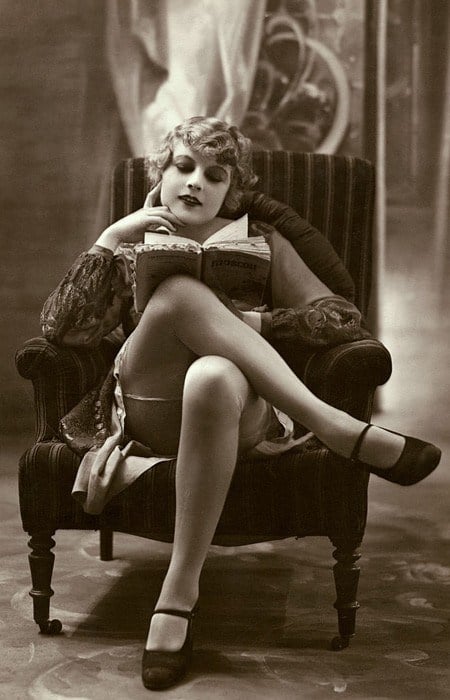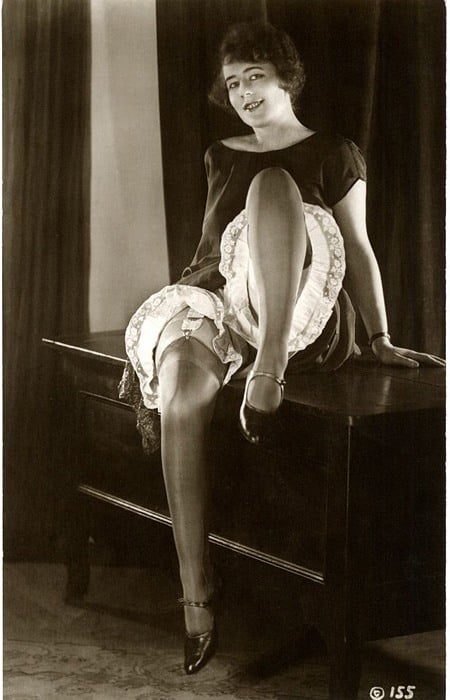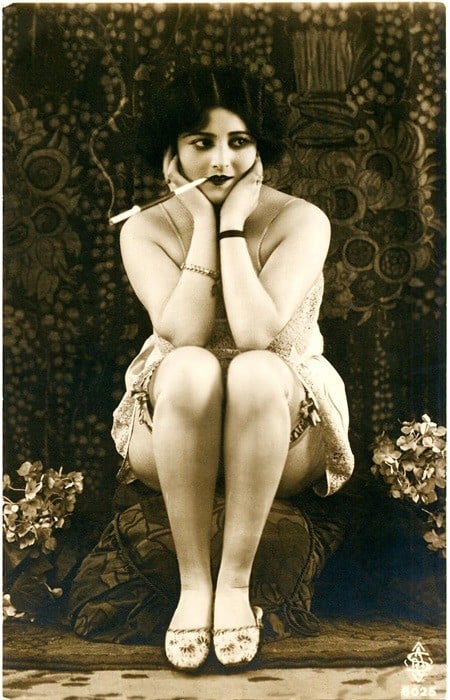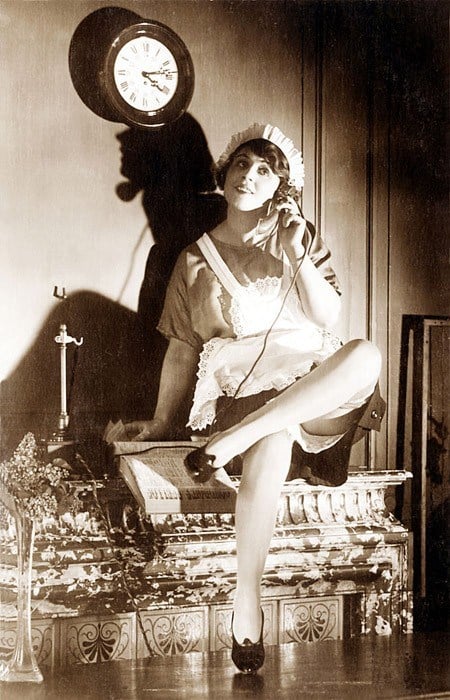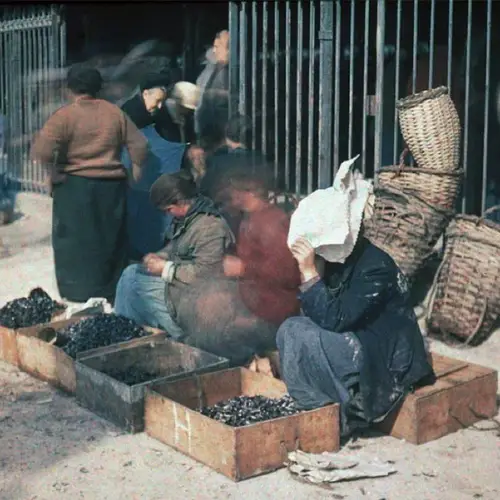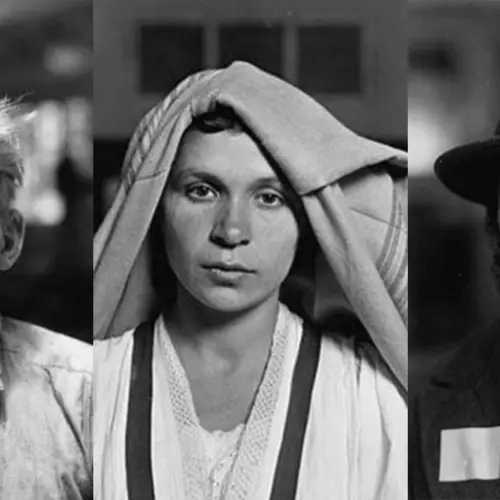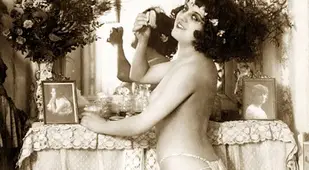The turn of the 20th century brought with it a number of changes. The French Postcard was just one of many responses to them.
The early 20th century saw a series of push-pulls: technological advances came with shifting moral codes and gender roles. Some people tried very hard to stop–or at least slow–such changes.
Hatchet-wielding, sex and alcohol-hating women like Carrie Nation preceded sex moguls like Polly Adler. Flappers sashayed around fat cat politicians and businessmen while a constellation of actors tried to legislate morality through dress and dance.
When times change, dissonant scenarios like these make sense. It also helps explain the popularity of the “French postcard,” seen in the gallery below:
These early 1920s erotic postcards originated in France, like the majority of similar sexually-charged postcards of the era. In the United States, all cards of this sort were known as "French Postcards," no matter where they originated.
In the '20s, the most commonly traded images contained deep plunging necklines, exposed garters, and panty peeks. Though not as prevalent, it was also possible to find postcards featuring bared breasts, exposed derrières, and even full nudity.
While tame by today's standards, the flirtatious images printed on thick cardstock shocked many at the time. Even in the Roaring '20s, many considered them pornographic and immoral. In an attempt to legislate morality, the U.S. government prohibited the sending of French postcards via the Postal Service.
The threat of fines - even imprisonment - gave models plenty of reason to use false names and wigs in order to conceal their identity. Photographers, too, would typically use a false signature to prevent tarnishing their reputation.
As a result, the identities of French postcard models -- as well those of the people who took them -- remain unknown to this day.
As with alcohol prohibition, the decision to make French postcards illegal made their production into a very profitable business. The camera was still pretty new to the world, and few people possessed one. When--not if--people wanted one of these photos taken or printed, they had to head to an erotic photographer who could charge a high fee for their services. Those wanting the photographic contraband could also purchase them (discretely) in local stores and tobacco shops, or purchase them from street vendors.
By the turn of the next decade, motions to censor and govern public morality had failed. The year 1933 saw Prohibition repealed, and as the '30s wore on erotic photography became more visible and popular. Perhaps early 20th-century composer Cole Porter said it best in the song "Anything Goes:"
"In olden days a glimpse of stocking was looked on as something shocking. Now heaven knows anything goes."
Check out Ella Fitzgerald's rendition of the song in the 1950s:
For more early 20th century photos, check out these images of the Ziegfield Follies.
